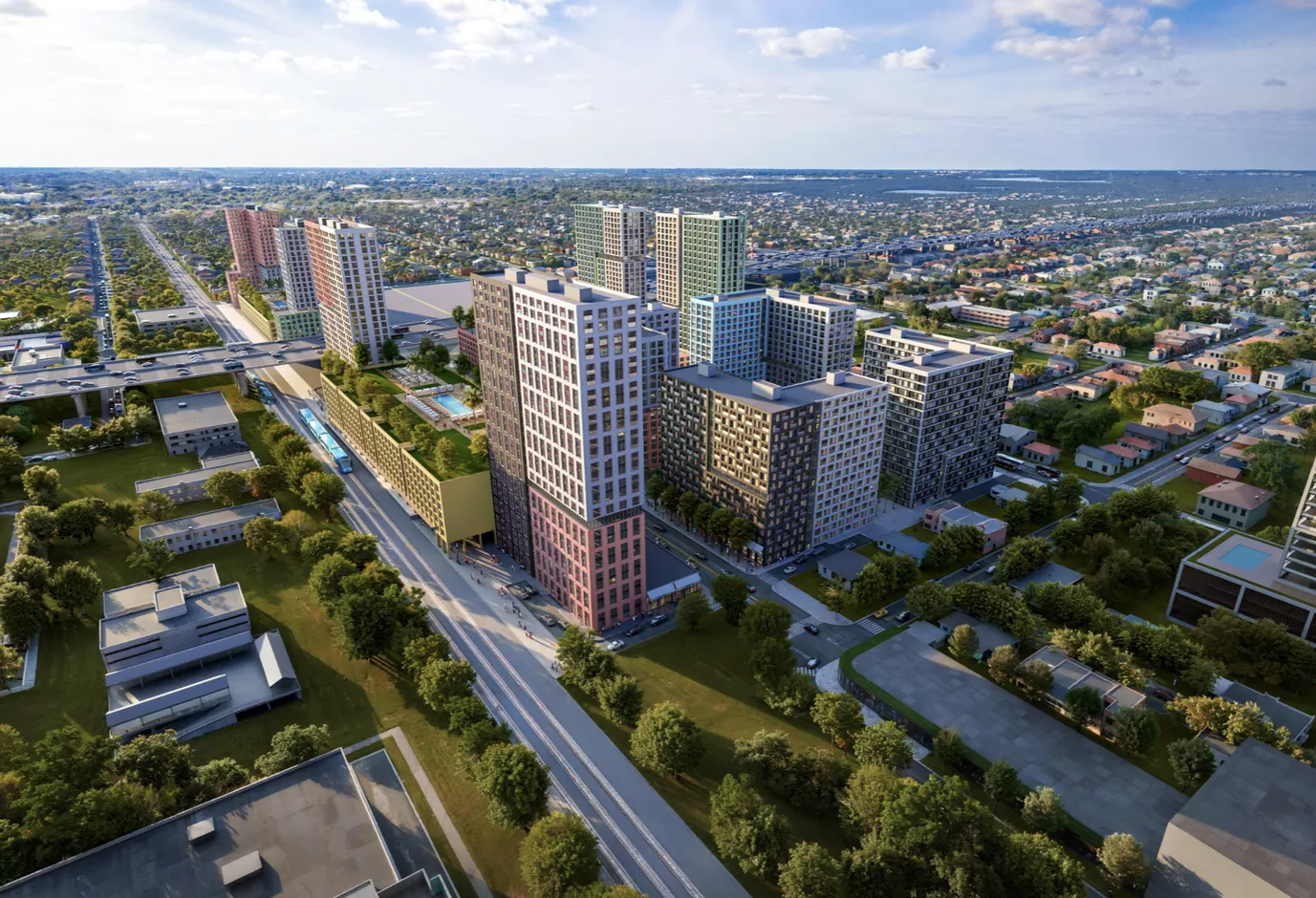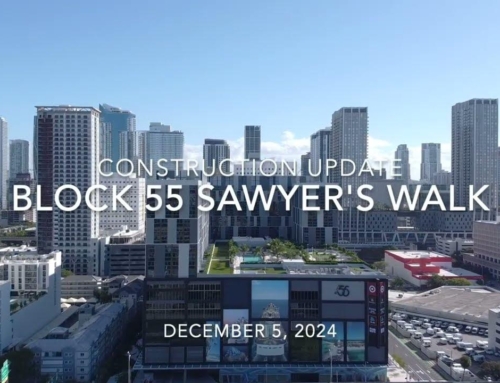Developers have secured the land rights for one of the biggest housing projects in Miami’s history.
The Miami-Dade County Commission voted unanimously Tuesday to approve the $3B Little River District, a 63-acre project set to bring nearly 6,000 affordable and workforce housing units to Miami’s Little River and Little Haiti neighborhoods.
The county agreed to a 99-year lease with developer SG Holdings — a partnership of Swerdlow Group, SJM Partners and Alben Duffie — to redevelop a handful of public housing complexes it owns as well as an array of privately owned sites.
The plans include 5,730 multifamily units, 370K SF of retail space anchored by The Home Depot and BJ’s Wholesale Club, and an investment of $35.4M from the developers toward a new Tri-Rail Station.
Spearheaded by Coconut Grove-based Swerdlow Group, the developers expect to break ground in 2026 and project an eight-year build-out.
“This approval is a major milestone in addressing Miami’s critical need for affordable and workforce housing,” Michael Swerdlow, founder and CEO of Swerdlow Group and managing partner of SG Holdings, said in a statement.
SG Holdings plans to demolish Victory Homes, Newberg, Gwen Cherry 22, Gwen Cherry 06 and New Haven Gardens for the project. It plans to build replacement units for the existing housing first to ensure no residents have to move more than once.
Miami-Dade sought developers through the Department of Housing and Urban Development’s Rental Assistance Demonstration program to redevelop the area, the Miami Herald reported. The developers must guarantee that all 314 low-income households receive replacement units with no rent increases.
SG Holdings agreed to make a $45.8M upfront lease payment, pay $5.2M in annual rent and 30% of its developer fees to the county. Miami-Dade officials estimated the county will collect more than $9.5B in revenue from the project over the next century, making it one of the most potentially lucrative deals in the county’s history.

Designed by Arquitectonica, the Little River District is planned to include 2,284 units for residents earning up to 60% of the area median income of the county plus 1,398 workforce rental units priced up to 120% of AMI. The developers also plan to offer 2,048 workforce condo units, available for buyers earning up to 140% of AMI.
The county’s median income is about $79,400.
Expected to generate roughly 3,840 jobs during construction, the project faced opposition from a coalition of labor groups and medical professionals advocating for stronger worker protections as well as apprehension from residents who have watched other communities be displaced by prior public housing redevelopments.
Last month, members of the coalition and residents of the buildings to be replaced voiced concerns before the Miami-Dade County Housing Committee meeting. The committee approved the project after SG Holdings agreed not to displace current residents and provide worker benefits.
Commissioners at the meeting emphasized that the developers must continue outreach to the residents involved.
The developers published a community benefits agreement that includes what they claim are a “first of their kind model” for worker protections, providing for “liquid and cooling tools,” shaded areas and education of both workers and managers about heatstroke. SG Holdings also said it would hire Community Awareness Construction Services, run by Lola Capers, to ensure compliance.
It also agreed to inclusive hiring, subcontracting and workforce development initiatives.
“At a time when population growth is fueling demand for housing and everyday services, the Little River District will deliver a community that prioritizes affordable and quality housing, accessibility to public transit and economic opportunity for local residents and business owners with the goal of generating prosperity for the highly deserving communities of Little Haiti and Little River,” Swerdlow said.
The developers are gaining feedback from neighborhood public meetings before finalizing site plans and building designs, the Herald reported. The next step for the project is securing zoning changes from the City of Miami and approval from HUD.



